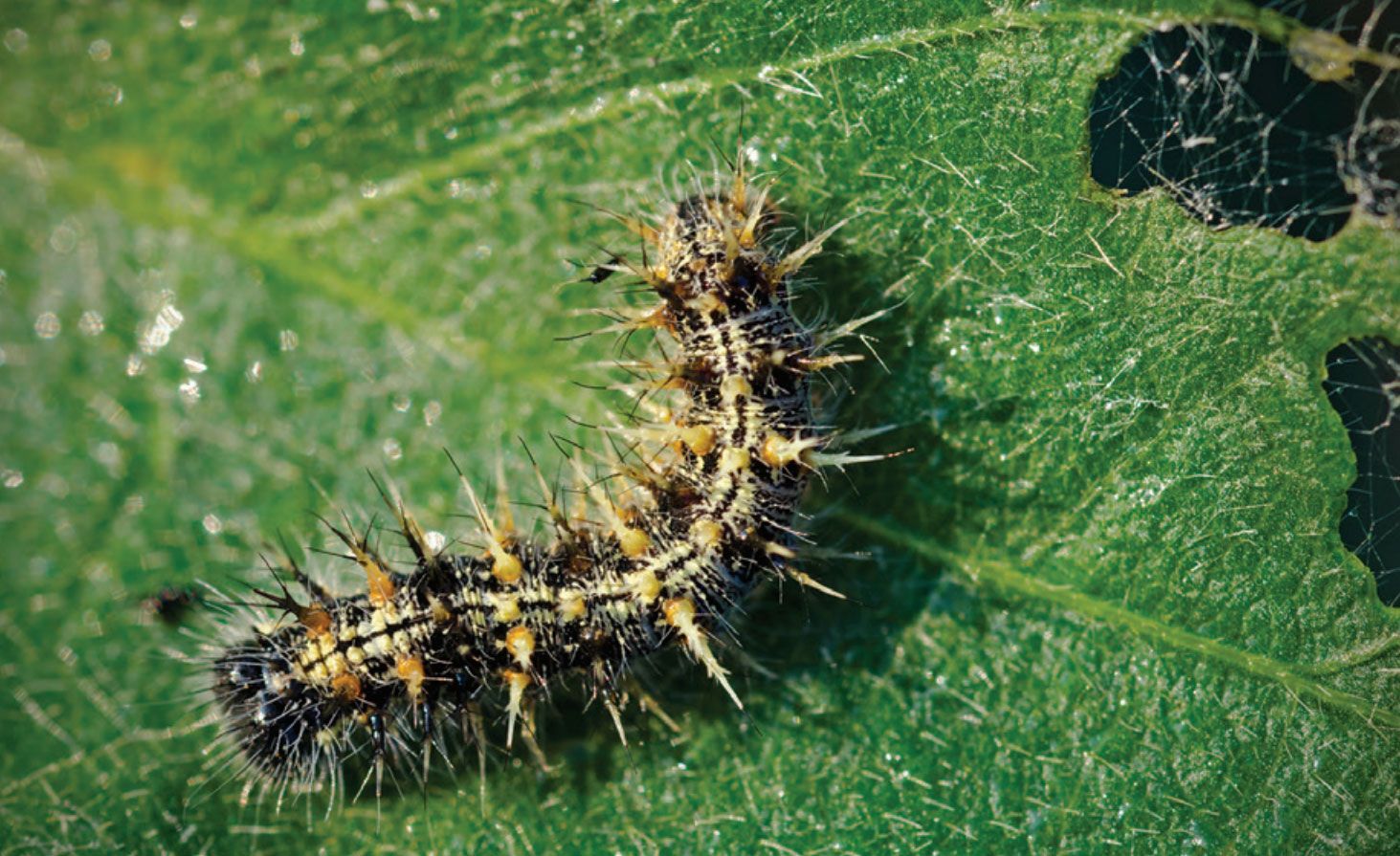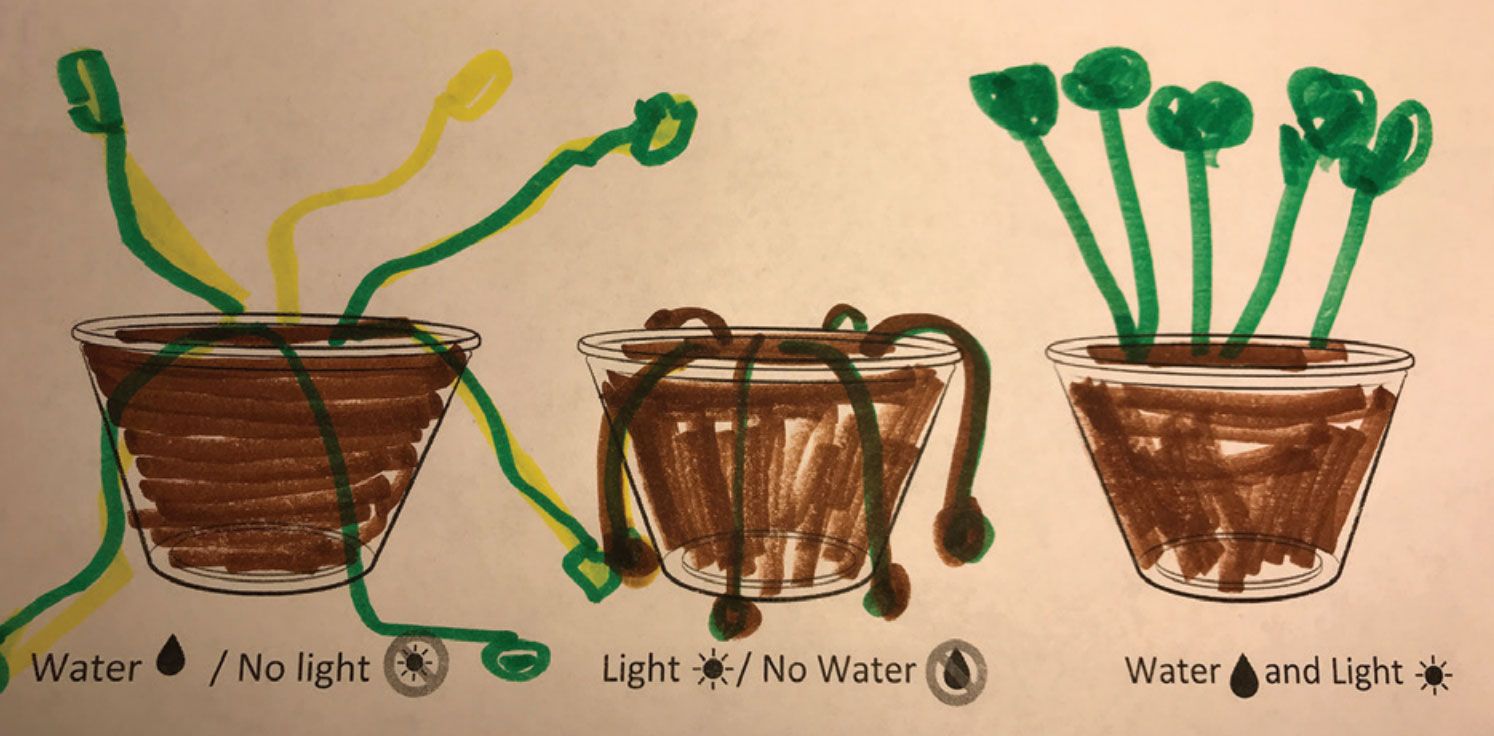Prioritize Curiosity
Young children enjoy observing the natural world and asking questions. This curiosity should be nurtured rather than suppressed. Start a sequence of science lessons with a natural phenomenon that is likely to spark students’ curiosity. For example, show students an image of a pole that is wet on one side and dry on the other side to start a series of lessons about weather elements. Give students time to make observations of the image, ask questions, and propose a cause. Students might think that a car splashed water on one side of the pole or that a person sprayed water on one side of the pole with a hose. After investigating different components of weather, such as rain and wind, students might revise their ideas to incorporate new knowledge into their explanation. They might suggest that wind blew the rain onto one side of the pole.
“(By doing science,) students are making claims and defending them (and) learning to respectfully dialogue and disagree with one another . . . I can’t imagine a more authentic or empowering way for students to learn to use and practice language skills than this.”
— Elizabeth Shepard
This pedagogy for teaching science is called phenomenon-driven learning. It is similar to problem-driven learning, where students are given a problem that motivates their learning. By presenting students a phenomenon or problem first and allowing them to share their initial observations, questions, and ideas, students’ learning is driven by their curiosity.
Observations as Evidence
The natural world—weather, animals, plants, moving objects—provides a rich data set for early learners to build science ideas on. Direct observations of the natural world and hands-on learning have been advocated as ways to engage early elementary students in science for years. But hands-on experiences should not be the end itself. Instead, hands-on experiences should be part of the scientific process. Educators once believed that young children were concrete thinkers and not capable of abstract thinking. However, more recent research findings suggest that early elementary students are capable of higher order thinking, such as planning investigations, analyzing results, and using evidence to support scientific explanations (Metz 1995). Young students should be using their observations of the natural world to ask questions that can be investigated and as evidence to support or refute their ideas.
A common elementary hands-on science activity is planting seeds and observing their growth. This gives students opportunities to observe the natural world, but it doesn’t inherently engage students in the scientific process of asking questions, planning and carrying out investigations, and constructing explanations based on evidence. Consider instead showing students plants that look unhealthy. After an opportunity to make observations and ask questions about what they see, students might wonder why the plants look unhealthy. If asked to share ideas for helping the plants, students might suggest giving the plants water or putting them near the window. These ideas can be leveraged to develop testable questions to investigate, such as “Do plants need water?” and “Do plants need light?” In this example, students still make observations and record data showing how plants change over time but for the purpose of collecting data to answer their own questions. Therefore, the hands-on experience is part of the process of doing science.
Communicating Authentically
Elementary teachers may feel that they don’t have time for science because they need to devote so much time to language arts instruction. However, language skills develop best when language is used authentically (Kamii and Lee-Katz 1979). Students improve their language skills more if they are using language to communicate for a reason rather than using language in a context that isn’t meaningful.
Trying to figure out why a natural phenomenon is happening or trying to solve a problem authentically motivates communication. For example, when kindergarten students are told they need to take care of caterpillars, they are motivated to figure out what the caterpillars need to live and grow so they know how to care for them. As students work to explain phenomena and solve problems, using sentence frames, collaborative investigations, argumentation, and science notebooks develop students’ communication skills.
Sentence Frames
Sentence frames help all students—especially English-learning students—develop fluency and communicate ideas without getting overwhelmed with grammar rules (Fathman and Crowther 2005). Teachers can provide sentence frames for students to share their initial or final ideas about what is causing a phenomenon or solving a problem. For example, students can use the following sentence frames to share their initial ideas about what they think caterpillars need:
- I think caterpillars need _________________.
- I think this because _____________________.
The sentence frame “I think this because ____________________” gives students experience providing evidence for their ideas without the teacher having to use the vocabulary word evidence in a question to students. The teacher can introduce the word evidence later and tell students how they have already used evidence to support their ideas.

Credit: Nnehring/iStock/Getty Images Plus
Young students are motivated by the problem of taking care of classroom caterpillars.
Collaborative Investigations
Collaborative investigations improve students’ communication and collaboration skills. If an activity is designed so that students positively depend on each other to reach a shared goal, it can also decrease individual competitiveness and develop problem-solving skills (Lin 2006). For example, students might work in a small group to investigate how to use a square of paper and a flashlight to make a small shadow, a large shadow, and a shadow with a different shape. Students will need to collaborate to decide who will do each job of the investigation. They will also need to continuously share their ideas and listen to each other to evaluate the consequences of their actions and decide what to try next.
Argumentation
Argumentation is a key part of the scientific process and inherently intertwined with communication skills. Argumentation is the process for reaching agreement about the cause of a phenomenon or reaching agreement about the best solution to a problem. Students can make an argument to a partner, to a small group of students, or in a whole-class discussion. Firstgrade teacher Elizabeth Shepard from Bolivar Road Elementary School, Chittenango, New York, describes what she tells teachers about argumentation in science when they say they don’t have time to give up from English language arts to teach science: “(By doing science,) students are making claims and defending them (and) learning to respectfully dialogue and disagree with one another. . . . I can’t imagine a more authentic or empowering way for students to learn to use and practice language skills than this.”
Argumentation in science can be confused with the everyday use of the word argue to mean people yelling at each other (Osborn et al 2001). Teachers should establish norms for class discussions that include listening to others and disagreeing with ideas respectfully.
Discussion Rules
Following is an example of rules for early elementary argumentation.
- Be a good listener.
- Pause when someone else is talking.
- Say if you agree.
- Say if you disagree.
- Use evidence.
- Ask for evidence.
Science Notebooks
Using science notebooks develops students’ written communication skills. The first stage of learning to write is learning that writing is meaningful to communicate ideas, stories, and facts (Byington and Kim 2017). A science notebook provides a place for students to keep a record of their changing ideas and the data that supports or refutes their ideas.

Students can use drawings in their science notebooks as evidence to support their ideas about what plants need to live and grow.
Students don’t need to be proficient writers to keep a record of their building science ideas in a notebook. Students can draw pictures, or they can draw in conjunction with writing phrases and/or one-word labels. Teachers can include simple scaffolds into science notebooks to help students record their data. For example, students can circle or check off a word or picture to represent their data.
Teachers should encourage students to use data in their notebooks as evidence to support their ideas. For example, a teacher could have students refer to drawings of plants given water, plants given light, and plants given water and light as evidence to support their ideas about what plants need to live and grow.
REFERENCES
Byington, T. A. and Y. Kim. 2017. “Promoting Preschoolers’ Emergent Writing.”
Young Children 72(5). Accessed January 2021:
https://www.naeyc.org/ resources/pubs/yc/nov2017/emergent-writing.Fathman, A. K., and D. T. Crowther. 2005. Science for English Language Learners: K–12 Classroom Strategies. Arlington: National Science Teachers Association.
Kamii, C. and L. Lee-Katz. 1979. “Physics in Preschool Education: A Piagetian Approach.” Young Children 34(4): 4–9.
Lin, E. 2006. “Cooperative Learning in the Science Classroom.” The Science Teacher (Winter): 34–39.
Metz, K. E. 1995. “Reassessment of Developmental Constraints on Children’s Science Instruction.” Review of Education Research 65(2): 93–127.
Osborne, J., S. Erduran, S. Simon, and M. Monk. 2001. “Enhancing the Quality of Argument in School Science.” School Science Review 82, no. 301: 63–70.
Nurturing Young Thinkers with Smithsonian Science for the Classroom
The Smithsonian Science Education Center (SSEC) aims to transform and improve the teaching and learning of phenomenon-driven science for K–12 students. One way it is doing this is by publishing four new phenomenon-driven kindergarten modules in the
Smithsonian Science for the Classroom series. Each module nurtures students’ curiosity as it guides them to answer questions and/or solve problems about the natural world. The accompanying
Smithsonian Science Stories supports literacy that integrates science content, and the new
SS@Home remote teaching and learning resources support teachers and keep students engaged.
Learn more about Smithsonian Science for the Classroom:
Carolina Biological Supply Company. www.carolina.com/ssftc
Email: curriculum@carolina.com
Call: 800.334.5551
©Smithsonian Science Education Center.
Transforming K–12 Education through Science ™ in collaboration with communities across the globe
ScienceEducation.si.edu




